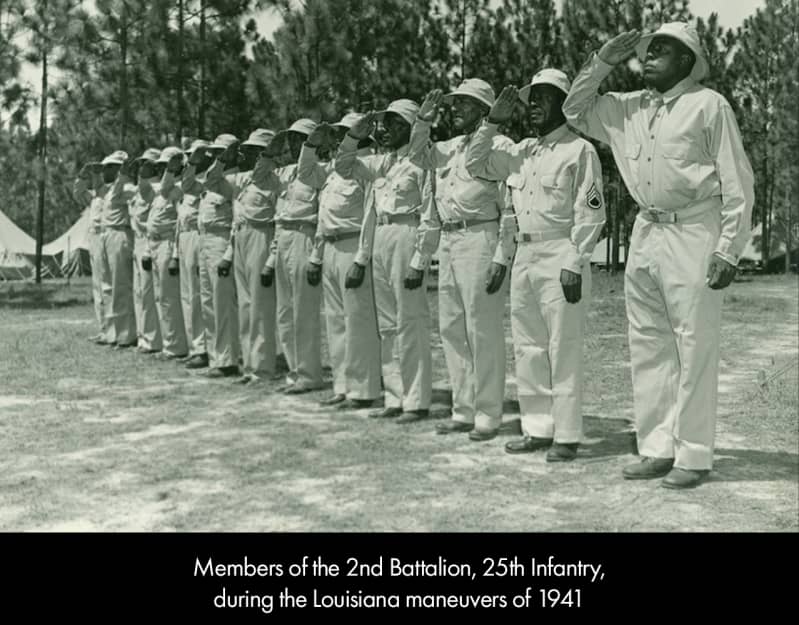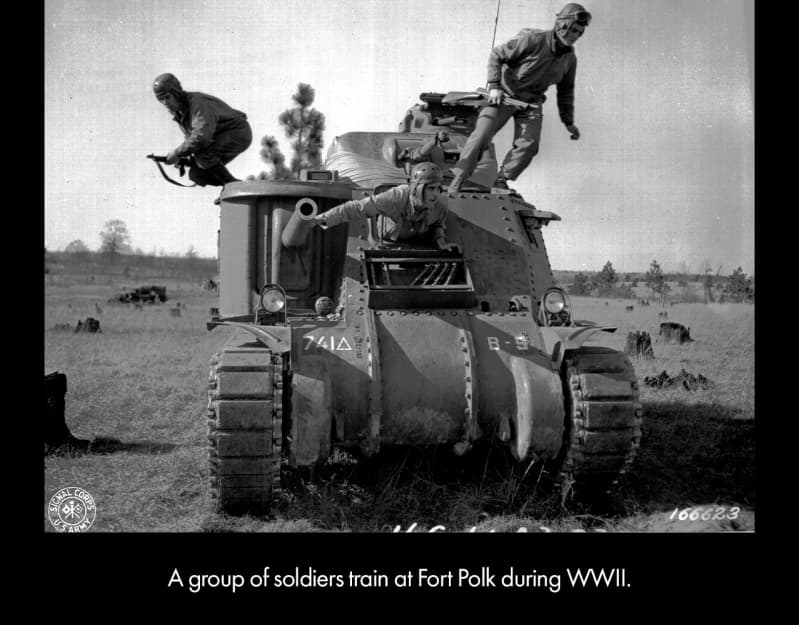The setting of A Soldier’s Play is based on the realities of Central Louisiana in 1944. Though Fort Neal, the base where A Soldier’s Play takes place, is not real, Louisiana is full of rich military tradition.
In 1944, there were six active military bases in Louisiana, most located in the South near New Orleans, with one in the Northeast of the state. Yet only one of the six military bases served the Army: Fort Polk, in Leesville, Vernon Parish. Fort Polk most likely served as the inspiration for A Soldier’s Play’s Fort Neal.
Jump to:
Fort Polk opened on August 1, 1941 and was designed in “an east-west, horizontal pattern divided into sections with space for training, barracks, offices, motor pool, and maintenance….[as well as] an area near the railroad tracks for parking tanks.” In the early days of the War, Fort Polk served as a station to prepare soldiers to fight in the European, Pacific and North African fronts. Fort Polk also served as the location for the “Louisiana Maneuvers.” During the Louisiana Maneuvers, over half-a-million soldiers decamped to Leesville and neighboring small towns in preparation for the outbreak of war by carrying out large-scale battlefield-style drills.
Not only was Fort Polk beneficial for the country in terms of war preparation, but it was a blessing to the citizens of Leesville and surrounding areas deemed an “economic savior.”
Much of Fort Polk’s construction was completed by residents of a Civilian Conservation camp called F-4, which was full of men from nearby towns, such as Leesville and Deridder. As such, the goings of Fort Polk were directly related to the fortunes and activities of Leesville.
Beginning in the early 1930s, the US Government established Civilian Conservation Camps, which would provide shelter and a paying job. These camps were established to help workers affected by the Great Depression, which struck Louisiana particularly hard. Central Louisiana was primarily a timber and agriculture economy. The demand for these goods ravished the land, leaving residents with no market to sell and no product.
Residents in the Civilian Conservation Camps “received food, medical care, clothing, and housing, as well as $30 a month in return for hard, physical labor. The camps, supervised by the U.S. Army, also offered high school education programs and classes for college credit. Camp F-4, about fifteen miles southeast of Leesville, featured Spartan dormitories, a first-aid building, and a large recreation hall. Every Sunday night, camp administrators showed a motion picture for residents and their guests.”
Leesville was a modest city for 1944: as of the 1940 US Census, there were over 2800 residents in Leesville. The creation of an Army base would add a significant number of new residents to the area and increase the number of Black residents as well. Much like Leesville itself, the majority of residents at Fort Polk were white. Today, the population of Fort Polk is nearly 67% white and 23% African American, continuing a demographic trend that was in place in the 1940s.
In a state like Louisiana, where the population was heavily lopsided, and in a town where an “integrated” Army base flourished, it is easy to see how violence between Black and white residents could be on the horizon—regardless of whether it actually happened, the threat was always plausible.


